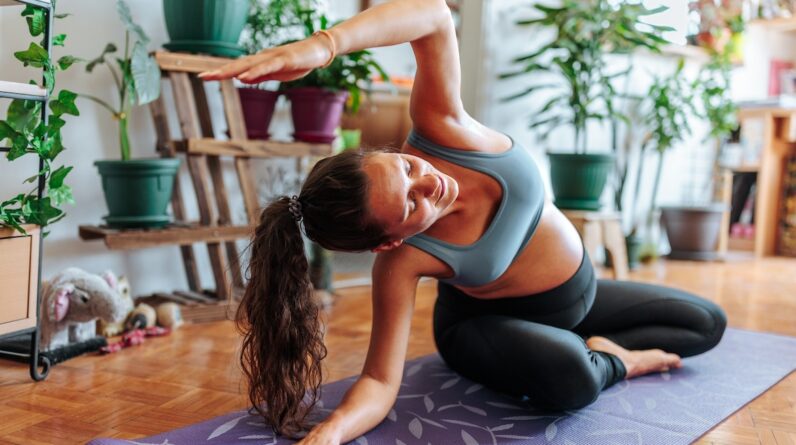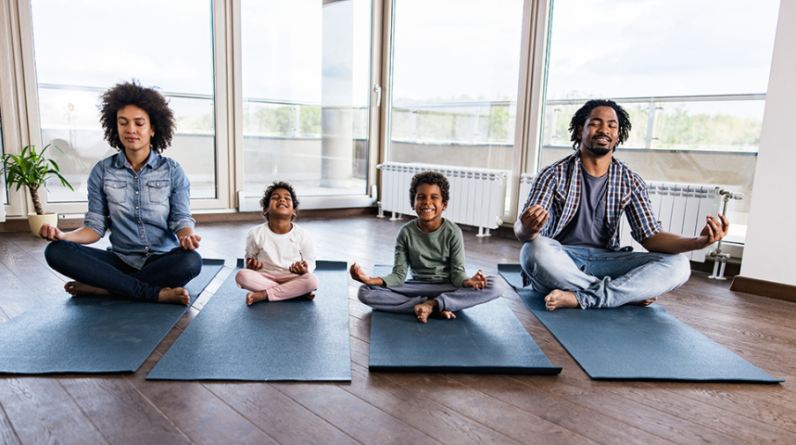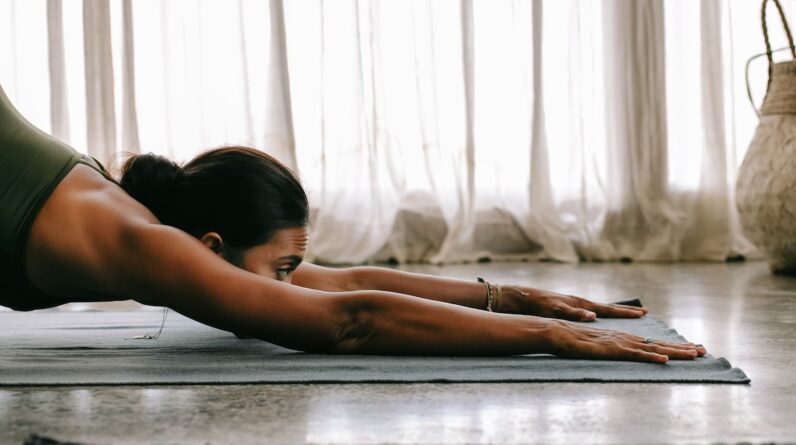
When I got pregnant with my first daughter, I knew my yoga practice (and, well, my whole life) would change. As a yoga teacher, I worried I wouldn’t feel “myself” when I wasn’t able to practice in the same way, and I wondered how that would affect my teaching.
“Nothing can really prepare you for how you’ll feel or be shifted when you become pregnant,” says Rachel Welch, a yoga teacher, women’s health advocate, and founder of Revolution Motherhood. “Mindful and embodied movement during pregnancy gives you self-direction and comprehension of your changing body.”
Initially, I couldn’t see that practicing while pregnant and in the postpartum period would actually make me a better teacher and student of yoga in the years to come. Not only that, but it’s also made me a kinder, more patient parent and person.
1. My practice became my own
When I practiced pregnant in studios, I found myself craving a slower pace and, in some poses, complete stillness. I also became aware of how fast I was moving in all those Vinyasa classes I’d been taking before I was pregnant, and I realized there was a downside to not really stopping and feeling each posture.
So I brought my practice home and committed to five breaths in three poses (at least) per day. Holding poses for a few breaths is common in Hatha yoga, and it’s still my preferred style to practice today. Holding the poses, over time, helped me develop more strength and flexibility.
“Pregnancy lends itself to slowing down,” Welch says. “When you listen deeper, you have the opportunity to inhabit your body and strength deeper and more completely than before.”
2. My balance (eventually) improved
I considered myself ungraceful before I got pregnant (yes, even as a yoga teacher). But during pregnancy, the extra weight in the front of your body offsets your center of gravity, which can affect your balance and raise your risk of falling, according to the American College of Obstetricians and Gynecologists (ACOG).
Practicing yoga, however, has been shown to help improve balance and coordination, according to Harvard Health Publishing. In prenatal yoga, you’re even encouraged to use props to support yourself in different yoga poses to help you work on your balance in a way that feels safe.
I worked on balancing poses, like tree pose (Vrksasana) and supported half moon pose (Ardha Chandrasana), more when I was pregnant, and I noticed real improvements in my coordination and stability over time.
I didn’t wait to “bounce back” or “recover” to start treating myself with the love and respect I deserved.
3. I learned how to (really) listen to my body
It’s common to hear an instructor say “listen to your body” at the beginning of a yoga class. The intention is to bring awareness to your internal bodily sensations, which helps build strength and avoid injury.
In pregnancy, there’s often no other choice but to listen to your body: Pregnancy symptoms are uncomfortable. Not only that, but you’re practicing with a new body that’s changing at warp speed, so it’s no secret that things are going to feel a little (a lot) different.
Every day, I rolled out my mat and laid down for a body scan meditation, which took about 10 minutes. Body scan meditation is a technique in which you close your eyes and focus your mind on the sensations you feel in individual parts of your body, one at a time from focusing on your body’s sensations, from head to toe or vice versa, according to the Cleveland Clinic.
While I was pregnant, I held my body in high regard as the vehicle that was creating, carrying, and getting ready to birth my baby. Where in the past, I may have tried to “fight through” discomfort or low energy, I practiced accepting my situation as it presented itself each day. I realized many symptoms were my body’s way of asking for more attention or rest, and I decidedly honored each request.
“Pregnancy and motherhood are opportunities to embody the biggest, brightest, most authentic expression of you,” Welch says. “The changes you encounter in this chapter are your guides to self-understanding, to learn how your body works and to re-pattern your physical and mental strength.”
Most days, I did just that: I moved slowly and gently on my mat. I tuned in with curiosity and compassion. I took the time I needed for me, to honor my own needs and meet them.
The whole point of yoga, some would argue, is to connect the body and the soul, or the you that exists in the here and now, not the “better” version of you that exists somewhere off in the future.
So I didn’t wait to “bounce back” or “recover” to start treating myself with the love and respect I deserved. I learned through my prenatal practice that acceptance is the real superpower, and progress (or growth) comes out of it—a lesson I’ve taken with me off the mat.







